Search Images
Browse Content (p. 1339)
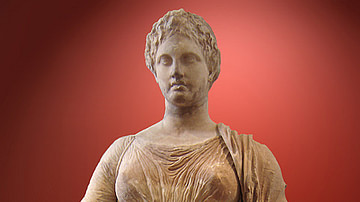
Image
Themis
A marble statue of Themis, the primordial goddess associated with Justice. c. 300 BCE.
National Archaeological Museum, Athens.
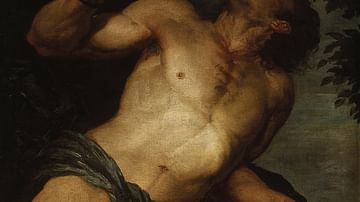
Image
Tantalus
A 17th century CE oil painting by Gioacchino Assereto depicting Tantalus, he who was punished by Zeus and had to stand under a fruit tree that remained forever just out of reach. (Auckland Art Gallery, New Zealand)

Image
Thetis Dipping Achilles into the River Styx
A painting by Antoine Borel (1743-1810) depicting Thetis dipping Achilles into the River Styx to make him immortal.
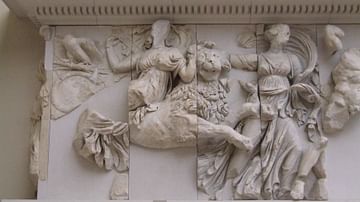
Image
Rhea Riding a Lion
A scene from the Pergamon altar depicting the Titan Rhea riding a lion. 2nd century BCE. (Pergamon Museum, Berlin)
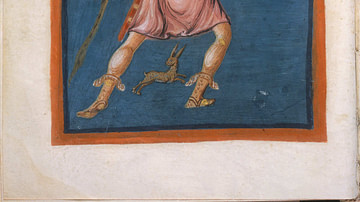
Image
Orion
A 9th century CE illustration of the hunter Orion from Greek mythology superimposed on the constellation named after him.

Image
Pleiades Constellation
The Pleiades constellation which in Greek mythology were the seven daughters of Atlas, transformed by Zeus into stars.
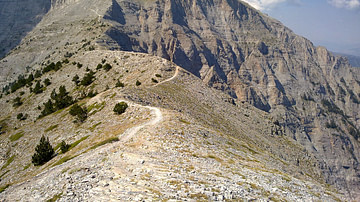
Image
Mt. Olympus
Mt. Olympus, the highest mountain (2,918 m) in Greece and home of the Olympian gods in Greek mythology.

Image
Oedipus & the Sphinx of Thebes
A red-figure tondo showing Oedipus and the sphinx of Thebes, from Vulci, 470 BCE.
Vatican Museums, Rome.
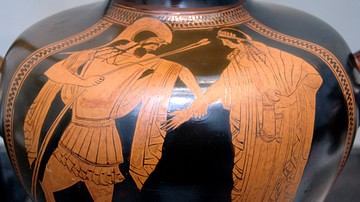
Image
Menelaos & Helen
A scene from a red-figure vase showing Menelaos re-capturing Helen during the Trojan War. 480 BCE. (Staatliche Antikensammlungen, Munich)
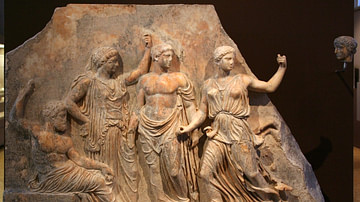
Image
Zeus, Leto, Apollo & Artemis
A relief showing Zeus and Leto with their offspring Apollo and Artemis to the right. 420-410 BCE. (Archaeological Museum of Brauron, Greece)